Top 10 Best Non-Toxic Plants for Classroom
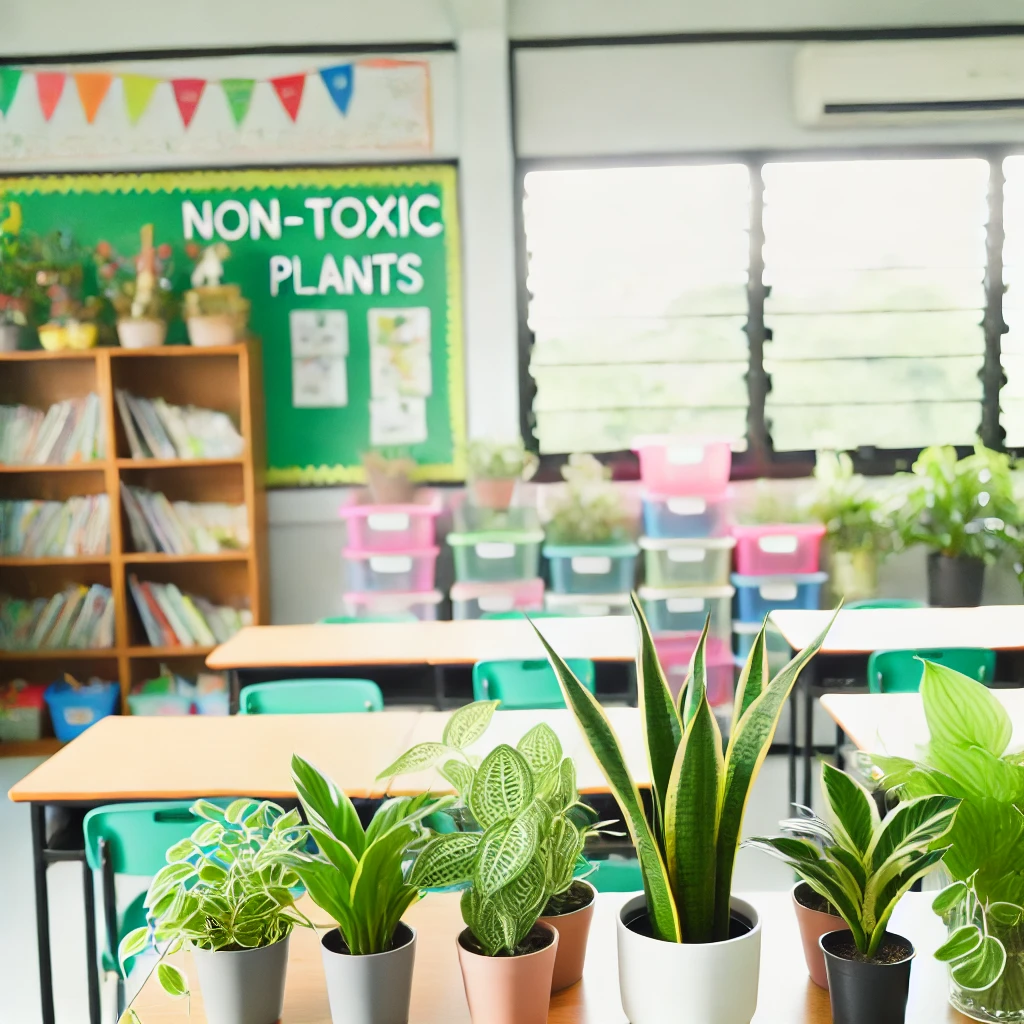
Creating a safe and welcoming classroom environment starts with choosing the right plants. In this guide, you’ll discover the Top 10 Best Non-Toxic Plants for Classrooms that not only enhance the space but are also safe for children. These plants improve air quality, promote focus, and bring nature indoors without the worry of harmful effects. Ideal for classrooms, they are easy to care for and perfect for brightening up learning spaces. Let’s explore the best non-toxic plants for your classroom!
Spider Plant
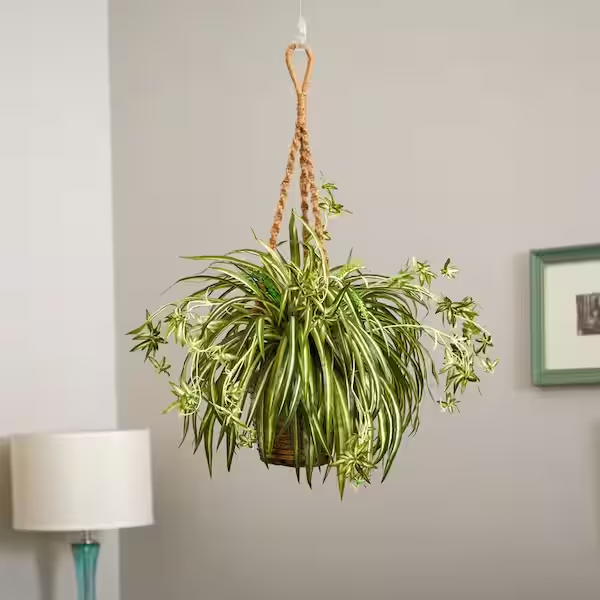
Among the many non-toxic plants suitable for classrooms, the Spider Plant stands out for its resilience and air-purifying qualities. You’ll find that spider plant care is straightforward, making it ideal for an educational setting.
These hardy plants thrive in indirect sunlight, so placing them near a window but out of direct light works best. They prefer well-draining soil, and watering them once a week is usually sufficient. Make sure the soil dries out between waterings to prevent root rot.
One of the key spider plant benefits is its ability to improve indoor air quality. Spider Plants are known to effectively remove pollutants like formaldehyde and xylene from the air, making the classroom environment healthier for students and teachers alike.
Additionally, these plants are non-toxic to pets and humans, ensuring safety should curious hands or paws come into contact with them.
Spider Plants also propagate easily, producing small offshoots, or “spiderettes,” that can be replanted. This feature offers a wonderful hands-on learning opportunity for students to understand plant reproduction and care.
Boston Fern
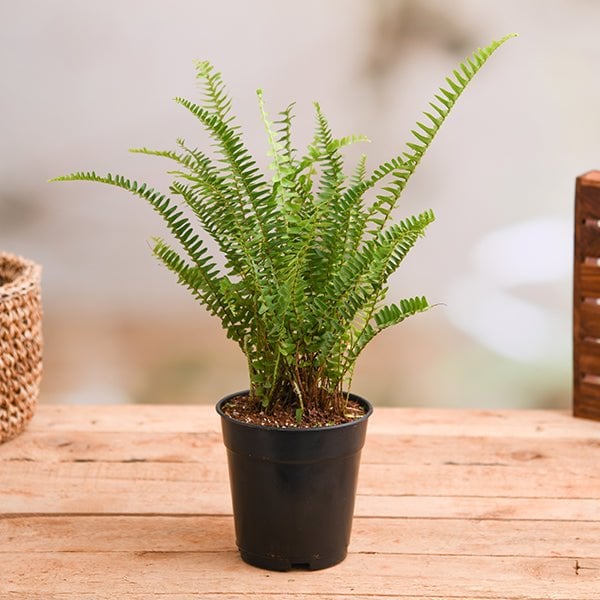
In your quest to enhance the classroom environment, consider the Boston Fern, a plant celebrated for its lush green foliage and air-purifying abilities. Its feathery fronds not only add a touch of nature to your space but also act as natural humidifiers, making the air more comfortable for everyone.
Boston fern care is straightforward, which makes it ideal for busy classrooms. Keep the soil consistently moist but not waterlogged, and guarantee it receives indirect sunlight. Boston Ferns thrive in humid environments; misting the leaves regularly can help maintain the necessary moisture levels. Using a well-draining potting mix will prevent root rot, a common issue if the plant is overwatered.
The Boston fern benefits extend beyond aesthetics. This plant is an excellent air purifier, known to remove toxins like formaldehyde and xylene from the air. Cleaner air can lead to fewer respiratory issues and a more focused learning environment.
Additionally, its ability to increase humidity can reduce the incidence of dry skin and irritation among students.
Incorporating Boston Ferns into your classroom is a wise decision. They’re low-maintenance, non-toxic, and provide both health and environmental benefits, making your teaching space more inviting and conducive to learning.
Areca Palm
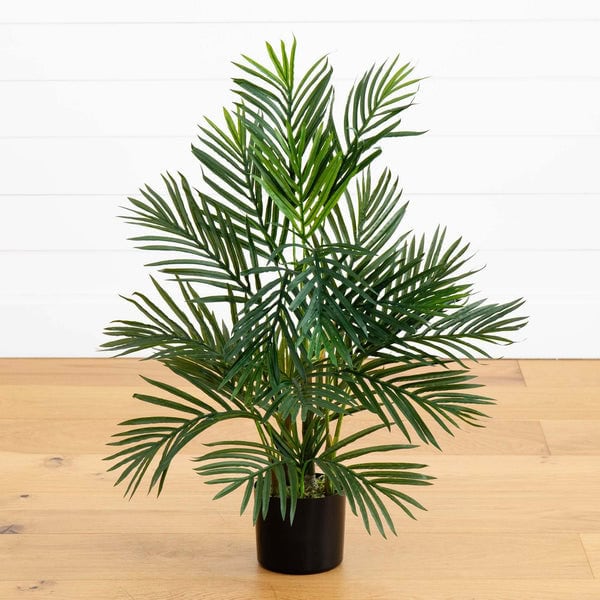
The Areca Palm, with its elegant fronds and imposing stature, can transform your classroom into a more inviting and healthier environment. This plant, known for its lush, feathery leaves, isn’t just a visual treat but also a powerhouse of benefits. One of the standout areca palm benefits is its remarkable ability to purify the air. It efficiently removes toxins like formaldehyde, xylene, and toluene, which are commonly found in indoor environments.
When it comes to areca palm care, you’ll find it relatively straightforward. The Areca Palm thrives in bright, indirect light, making it suitable for classrooms with ample windows. Confirm the soil remains moist but not waterlogged; overwatering can lead to root rot. A well-draining potting mix will considerably aid in maintaining the right moisture balance.
Additionally, this plant appreciates regular misting to emulate its tropical origins.
Another compelling aspect of the Areca Palm is its non-toxic nature, making it a safe choice for classrooms occupied by young students. Its presence can enhance cognitive function and reduce stress levels, fostering a more conducive learning environment.
Parlor Palm
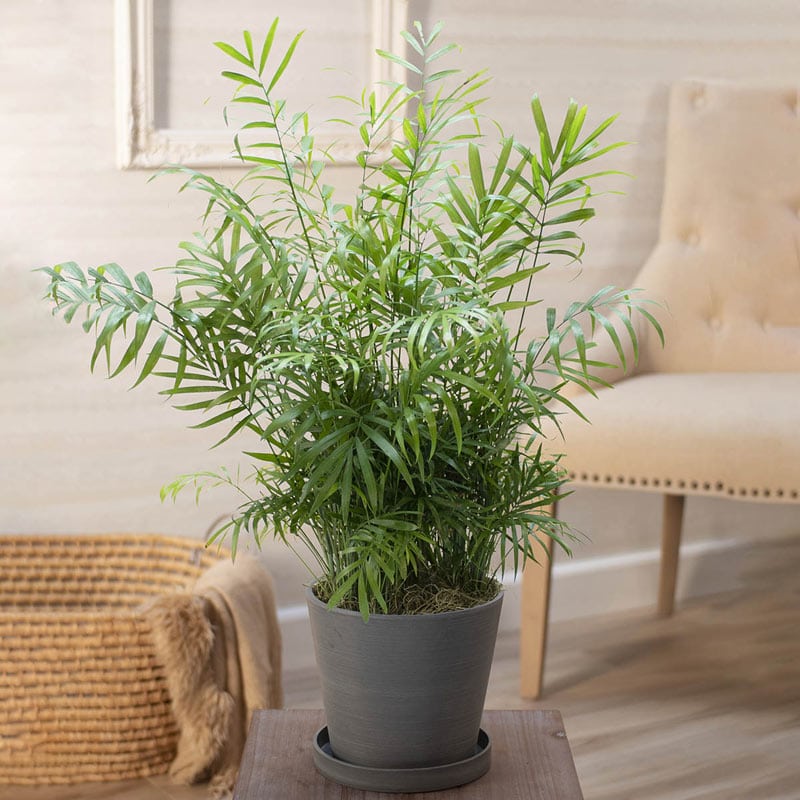
Often hailed as a classic choice for indoor spaces, the Parlor Palm brings both elegance and practicality to your classroom. This plant, known scientifically as Chamaedorea elegans, thrives in low light, making it ideal for classrooms with limited natural sunlight.
One of the primary parlor palm benefits is its ability to purify the air by removing toxins like formaldehyde and benzene, contributing to a healthier learning environment.
Parlor palm care is straightforward, making it perfect for a busy classroom. Keep the soil consistently moist but not waterlogged, and ascertain the pot has good drainage. The plant prefers temperatures between 65-80°F, which aligns well with most indoor climates.
It’s also resistant to pests, reducing the need for chemical treatments that could be harmful in an educational setting.
Another advantage is its slow growth rate, meaning you won’t need to repot it frequently. Plus, the Parlor Palm is non-toxic, guaranteeing the safety of curious young hands.
Ponytail Palm
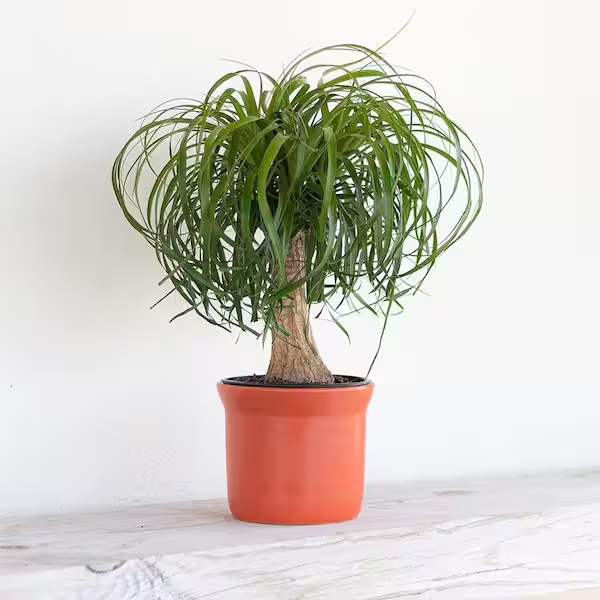
Although it might resemble a palm, the Ponytail Palm, or Beaucarnea recurvata, is actually a member of the agave family. This fascinating plant is an excellent choice for classrooms due to its unique appearance and ease of care.
Ponytail palm care is remarkably straightforward, making it ideal for busy educators and curious students alike.
To guarantee your Ponytail Palm thrives, follow these simple care tips:
- Light: Place it in a bright, sunny spot. It can tolerate low light but prefers indirect sunlight.
- Water: Water sparingly, as its bulbous trunk stores moisture. Overwatering can lead to root rot.
- Soil: Use well-draining soil to prevent water accumulation.
The Ponytail Palm offers several benefits that make it perfect for educational environments. Its low maintenance nature means it requires minimal attention, allowing you to focus on teaching.
Additionally, its unique, sculptural appearance adds a touch of greenery and intrigue to the classroom, potentially sparking students’ interest in botany.
Moreover, like many indoor plants, it helps improve air quality by filtering pollutants, creating a healthier learning space.
African Violet
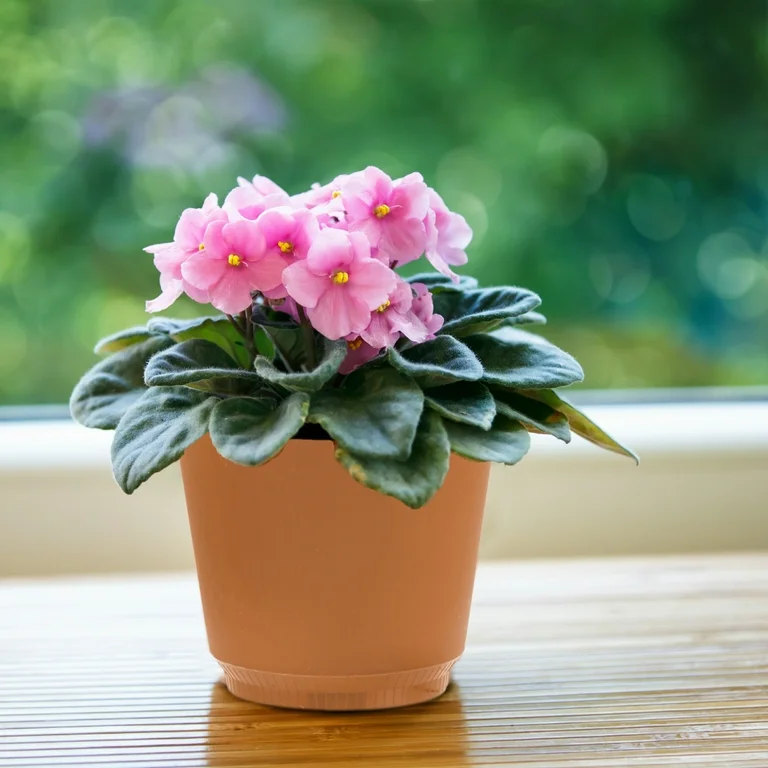
Just as the Ponytail Palm captivates with its unique form and minimal care requirements, African Violets, or Saintpaulia, offer another excellent option for the classroom.
These charming plants are known for their vibrant blooms and compact size, making them perfect for limited space environments. They thrive under fluorescent lighting, which is often found in classrooms, and their non-toxic nature guarantees they’re safe to have around students.
When it comes to african violet care, these plants prefer well-draining soil and a consistent watering schedule. Be sure to water from the bottom to avoid wetting the leaves, which can lead to rot. They also appreciate humidity, so placing the pot on a tray of pebbles with water can help maintain the right moisture level.
African violet propagation is straightforward and can be a fun classroom project. Simply take a healthy leaf, cut the stem at a 45-degree angle, and place it in water or moist soil.
Roots and new plants will begin to form in a few weeks. This hands-on activity not only teaches students about plant biology but also fosters a sense of responsibility and care for living things.
Cast Iron Plant
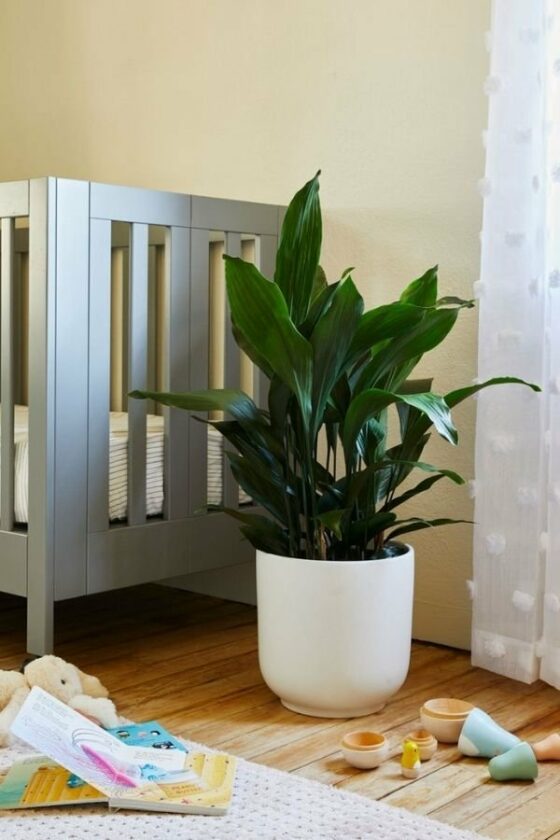
Among the most resilient and low-maintenance plants suitable for a classroom setting is the Cast Iron Plant, scientifically known as Aspidistra elatior. This plant earns its name due to its remarkable ability to withstand neglect and thrive in less-than-ideal conditions, making it perfect for busy educational environments.
When it comes to cast iron care, you’ll find it incredibly straightforward. The Cast Iron Plant tolerates low light, irregular watering, and poor soil quality. You don’t need to fuss over it, which means more focus on teaching and less on plant maintenance. Just water it occasionally and guarantee the soil is well-drained to avoid root rot.
The cast iron benefits are numerous for a classroom setting:
- Air Purification: It filters toxins from the air, contributing to a healthier classroom environment.
- Durability: Its tough nature means it can handle the occasional bump or knock without suffering.
- Aesthetic Appeal: With its lush, dark green foliage, it adds a touch of nature and tranquility to any classroom.
Bamboo Palm
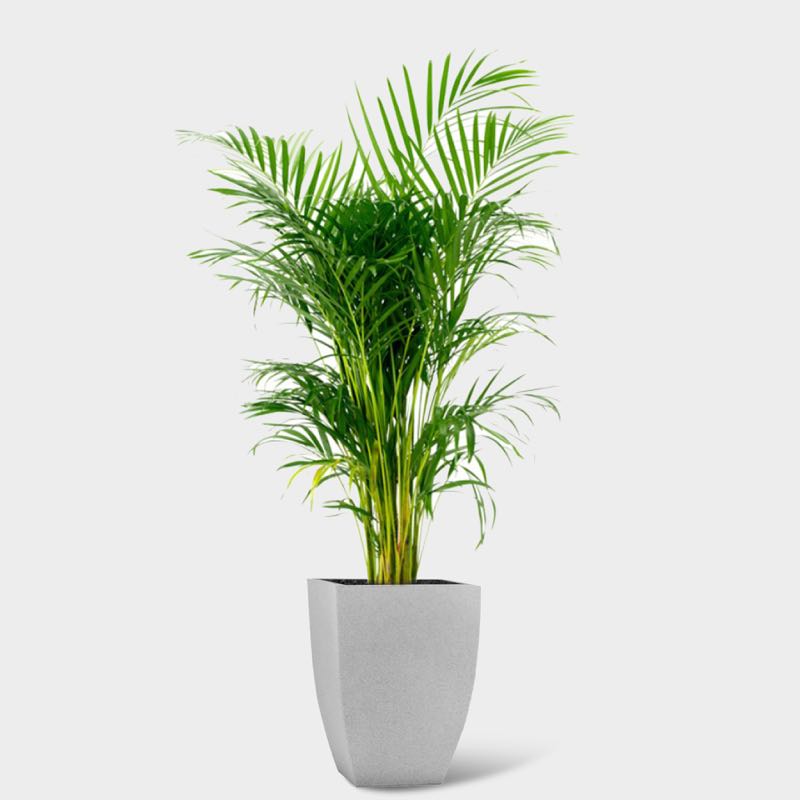
Step into the world of the Bamboo Palm, scientifically known as Chamaedorea seifrizii, a top-tier contender for classroom greenery. Renowned for its air-purifying qualities, this plant not only enhances the aesthetic appeal but also contributes to a healthier learning environment.
To guarantee peak bamboo palm care, place it in indirect sunlight and water it when the top inch of soil feels dry. This plant thrives in temperatures between 65-75°F and appreciates a humid atmosphere, making it ideal for indoor settings.
One of the standout bamboo palm benefits is its ability to filter toxins like formaldehyde and benzene from the air, promoting a cleaner and safer classroom. Additionally, its lush, feathery fronds create a calming visual effect, which can help reduce stress and improve concentration among students.
The Bamboo Palm is also non-toxic, ensuring it’s safe for curious young hands and pets.
In terms of maintenance, the Bamboo Palm is relatively low-maintenance. Occasional pruning of dead or yellowing fronds will keep it looking vibrant, and a monthly feeding with a balanced liquid fertilizer during the growing season can boost its health.
With its combination of aesthetic, health, and practical benefits, the Bamboo Palm is a stellar choice for any classroom.
Baby Rubber Plant
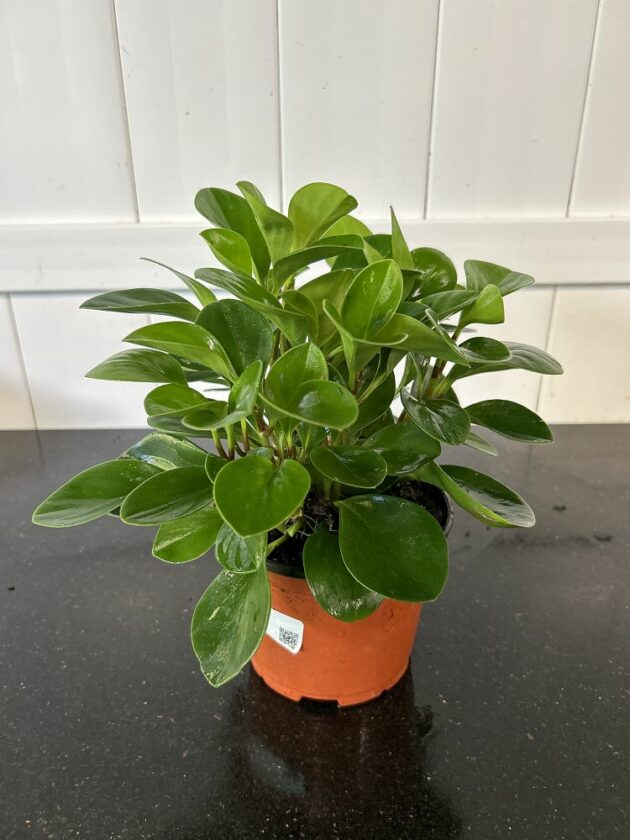
The Baby Rubber Plant, also known as Peperomia obtusifolia, frequently emerges as a popular choice for classroom environments due to its robust nature and appealing aesthetics. This plant can thrive with minimal intervention, making it ideal for busy educational settings. Its thick, glossy leaves aren’t only visually pleasing but also contribute to its hardy constitution.
When it comes to baby rubber plant care, you’ll find it remarkably straightforward. The plant requires moderate, indirect light and only needs watering when the soil feels dry. Overwatering can be an issue, so it’s essential to let the soil dry out between waterings.
Key benefits of the Baby Rubber Plant include:
- Air Purification: It helps in removing toxins, creating a healthier classroom environment.
- Low Maintenance: Perfect for those who may not have a green thumb.
- Non-Toxic: Safe for children and pets, reducing any worry about potential harm.
These baby rubber plant benefits make it an excellent choice for classrooms. Not only does it enhance the aesthetic appeal, but it also contributes to a healthier and more engaging learning space.
Friendship Plant

Introducing the Friendship Plant, scientifically known as Pilea involucrata, can add a touch of verdant charm to any classroom. This plant isn’t only aesthetically pleasing with its lush, textured leaves but also safe for a classroom environment since it’s non-toxic to both humans and pets.
One of the primary friendship plant benefits is its low maintenance. It thrives in low to medium light, making it perfect for classrooms that mightn’t have direct sunlight. Additionally, its compact size allows it to fit comfortably on desks or windowsills without taking up much space.
When it comes to friendship plant care, you’ll find it quite straightforward. Water the plant when the top inch of soil feels dry, ensuring not to overwater as it prefers slightly moist soil. Its tolerance for varying light conditions means it can adapt to different classroom settings with ease.
Furthermore, the Friendship Plant is known for its easy propagation. Cuttings from the plant can be shared with students, promoting a sense of responsibility and community. This propagation aspect ties back to its name, fostering a spirit of sharing and growth among students.
Conclusion
You’ve now got a list of the top 10 non-toxic plants for classrooms. Imagine the benefits: cleaner air, a safer environment, and an engaging learning space. These plants aren’t just decorations; they’re silent custodians of health and well-being. By incorporating Spider Plants, Boston Ferns, and others, you’re not just enhancing aesthetics—you’re investing in your students’ futures. So, why wait? Let these green allies transform your classroom into a vibrant, thriving haven.